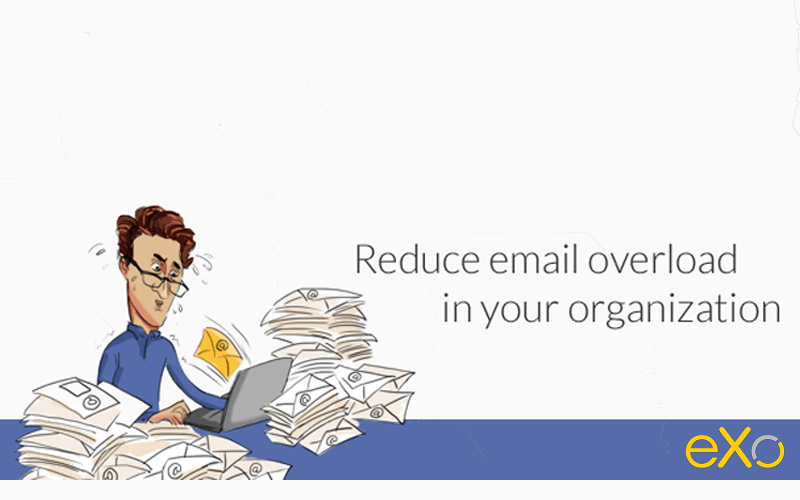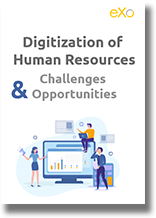- Veronika Mazour
- December 2, 2015
Ways to reduce email overload in your organization

Content
It would be great if the number of my team’s daily emails were directly correlated to our productivity as an organization or our added value to our clients, but in reality, the contrary holds true. Between marketing emails and endless conversation threads with ten ccs, processing email becomes a project in itself. McKinsey estimates that we spend 28% of our day managing email, which amounts to one-third of a work day spent on processing without gaining added value.
What can be done at an executive level to reduce this processing time for your organization? The tips and best practices provided below worked for my teams and some executives whom I admire.
Decongest through parallel communication channels
Ban emails to everyone
There are two main reasons for emailing everyone in an organization: corporate communications and work questions.
Corporate communications, from strategic messaging to parking and catering information, are better suited for publication on the corporate Intranet rather than for employees’ inboxes.
In the same way, work questions to all employees (“Does anyone know...?”) are better suited for posting on a corporate social activity stream or a similar service. An added benefit of this route is that answers are available to others.
Ban group emails
Probably one of the biggest productivity killers is group emails in which several people are copied. Since those are work emails (as opposed to the corporate emails mentioned above), they have to be read and dealt with (instead of archived without reading). However, finding the context or action needed in an endless email thread is frustrating and time consuming, especially when some of the recipients responded only to the original sender. We have all seen countless examples of this.
A solution for that problem is to replace as many group emails as possible with a message in the activity stream or a forum post for the relevant project/team. This way, all the relevant people are aware of the discussion, the context is clearer, and the entire exchange is available at a glance.
Improve your email communication to lead by example
Send emails you would like to receive
Think about what you would like to see in all emails from your teams, such as the following:
- put the topic in the subject line;
- summarize the context;
- clearly state the purpose (if you need someone to do something or not do anything, say so); and
- keep it short!
Prevent reminders
If you are planning to answer an email eventually but do not have time to do it right then, simply use email templates to acknowledge that you received the email and add that you will respond later.
Acknowledging that you received an email and noting that you will provide an answer (at some point in time) has a double benefit:
- it stops reminders and declutters your inbox; and
- it does wonders for your professional image as long as you keep your promises.
It would be so nice if all your team members automatically let you know when they will reply and then hold to that date.

FREE WHITE PAPER
Improve your productivity to increase your team’s productivity
Disconnect yourself
As an executive, your input is needed regularly so your teams do not get stuck. However, constant interruptions destroy your ability to focus on anything other than communications. An interesting study by Gloria Mark, a researcher at the University of California, Irvine, indicates that it takes us 23 minutes to get back to productive work after an interruption of just 3 minutes.
The best results are achieved through reaching a middle ground by managing emails several times a day instead of continuously. Outside those windows, turn off all your notifications. When you read your emails, focus on that task alone.
Do not start your day with email
It is very tempting to open your inbox and check a couple of news sites as soon as you wake up or arrive at your desk in the morning. However, that way of starting your work day basically ruins your entire morning. Alternatively, if you start by reviewing actions that you planned for the day and taking an hour and a half to work on those before plunging into your inbox, you can feel like you accomplished something before lunchtime.
This method does take some strong nerves because we can get stressed out about emergencies. In most cases, emergencies do not happen everyday, and your co-workers can survive experiencing a one-hour delay before getting a response.
As an additional benefit of the above time-management practice, your team members will start communicating better and will talk with you ahead of time to get timely feedback.
Stay on top of your inbox
Use filters, Unroll.me, and other email-management tools
A wide variety of tools on the market today focus on email account management. Depending on how you work, some might be more useful to you than others. Here are a couple of suggestions for tools that are easy to use and free:
- Automatic filters are included in most inboxes. These help capture and archive emails before they clutter up your inbox.
- I recently discovered a killer app: Unroll.me. This app allows you to manage your subscriptions and easily unsubscribe from different lists, and it bundles the rest of your subscribed emails in one message per day that you can safely choose to ignore or read depending on your mood and workload.
Process each email only once
These tips are inspired by the “getting things done” method. The latter can be implemented regardless of which email program you use. For Gmail, the Active Inbox add-on is tailored for the “getting things done” approach.
When it comes to managing your inbox, the golden rule is to process each email only once. Instead of reading a message and leaving it in the inbox for later, make the effort to take action on every message:
- You can delete or archive some based on the subject line.
- If it is quick and painless to do so (under 2 minutes), answer some.
- Mark messages for action if action is needed using an action label or a folder. Send an email to yourself summarizing the action needed. Use the acknowledgement technique discussed above to buy some time.
- Mark messages for which you are waiting on a follow up.
- Use stars or tags to mark your actions for that day.
Following these simple rules minimizes your processing time.
Tips for managing annoying emails
- Send very short answers to long emails from your team, e.g., “yes” or “good idea.” In turn, this will help decrease the length of the emails your teams send.
- If it is unclear why you are copied, ask why. This can help stop automatic copying.
- If it is unclear what the sender needs from you, ignore the email. If you need to take action, they will email you again.
Get to “inbox zero” every day
This final piece of advice is obvious but is easier said than done. We hope all the preceding tips will help you get to inbox zero, which means that your number of unread emails at the end of each day is zero, preventing a vicious circle of reminders.
Getting on top of your emails gives you a wonderful sense of control over your tasks, whether they are personal or professional. We think these tips will help you achieve that goal.
Let us know what you think and how you manage email overload in your organization!
Related posts
- All
- eXo
- Digital workplace
- Open source
- Internal communication
- Collaboration
- News
- intranet
- Future of work
- workplace
- Knowledge management
- Employee engagement
- Employee experience
- Employee productivity
- onboarding
- Employee recognition
- Change management
- Cartoon
- Digital transformation
- Infographic
- Remote work
- Sneak Peek
- Solutions
- Thought leadership
- Tips & Tricks
- Tutorial
- Uncategorized
Leave a Reply
( Your e-mail address will not be published)


